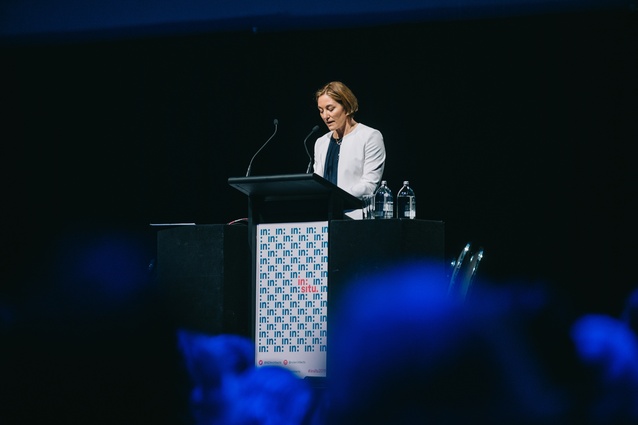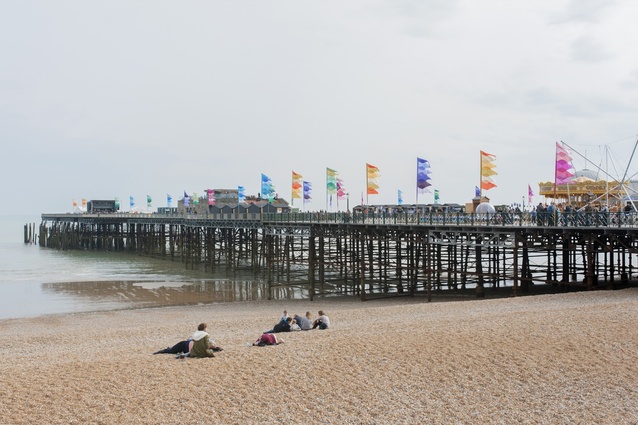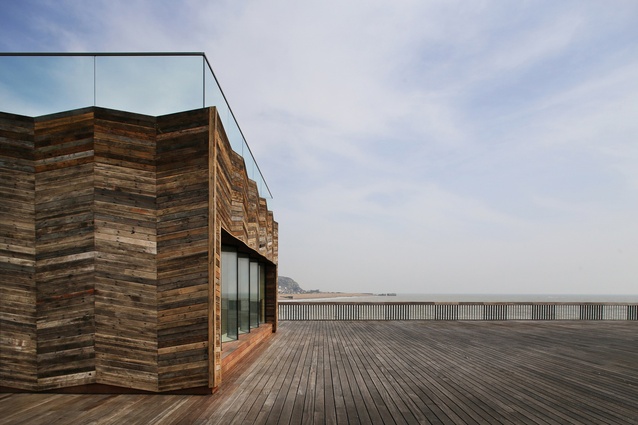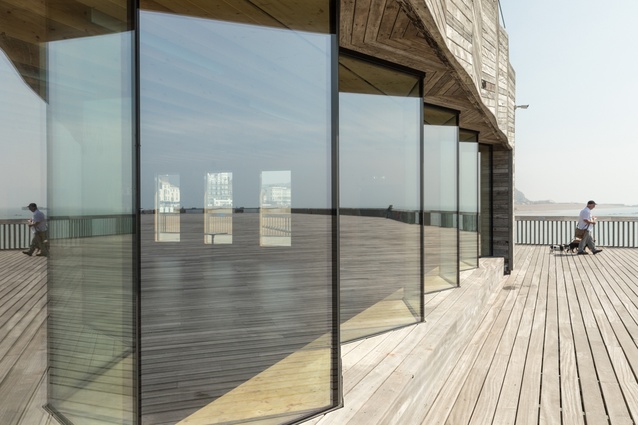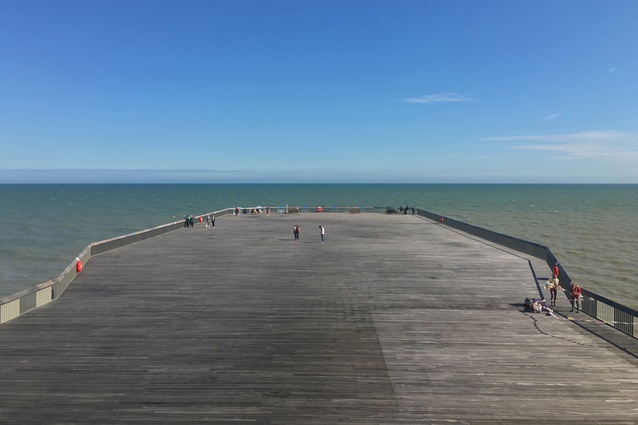In:situ 2019 series #4: Sadie Morgan
Continuing our series of interviews from the 2019 in:situ conference, Melanie McDaid speaks with award winning British designer Sadie Morgan. Morgan is a founding director of drMM, the youngest ever president of the Architectural Association (AA) and Mayor’s Design advocate for the Greater London Authority, just to name a few of her many accomplisments. Here, she talks about bringing designers into the government level, climbing Kilimanjaro and what fills her London flat.
Melanie McDaid (MM): As a visitor to New Zealand, what are your expectations and thoughts about our culture of design and architecture?
Sadie Morgan (SM): I didn’t really know what to expect, I knew that it was going to be very, very beautiful. I kind of imagined a land of plenty, and when I flew over, I just looked down and thought, oh, my God this is beautiful. I mean, it’s just beautiful. So, I haven’t been disappointed in the sense of the quality of the landscape and the overall kind of beautiful place. As for the architecture and the built environment, I really didn’t know what to expect, and let’s just say, it is an eclectic mix. What I am surprised about is the lack of public realm, actually. I have been quite surprised at the street level that it doesn’t feel pedestrian friendly. I haven’t had the chance to explore anything that has felt really humanistic in scale in terms of the city.
MM: You grew up in Kent, England in a cooperative community set up by your grandfather… that sounds interesting! Did this influence your career path?
SM: I tell you where I think it played a part is that I will usually take any opportunity that comes to me and I have a confidence and self-belief in my ability to do things. That’s not to say, I feel like I’m going to be fantastic, but it just means that I’ll try these things out. So, I’m very positive and I usually try to find a way out of a difficult situation proactively. I suppose when a when opportunity comes my way, or even if it doesn’t look like an opportunity, I’ll make a go of it.
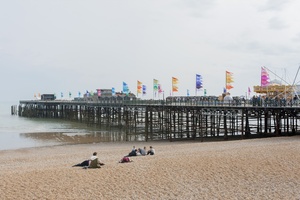
When things have come my way I’ve taken them, even when it means going out of my comfort zone. So a lot of the work that I’m doing now, fast forward 23 years, for the government, my first instinct was to turn it down thinking oh my goodness, I couldn’t possibly do that and it’s going to be awful and I’ll be terrible at it. Then, the kind of safety kicks in and says, come on, you can do it, and even though sometimes you do feel terribly out of your depth or being very much a round peg in a square hole, I think that you find the things that you’re good at. Then you work out how you can positively use those skills within the situation that you’re in.
MM: You studied interior design at the Royal College of Arts in London. How was that experience and was there anything you feel you were not prepared for when you joined the design world after College?
SM: I love the fact that the beginning of my career was about interiors, because it’s about, really, a kind of reuse – about finding new ways of using old buildings. It’s incredibly relevant and it also is a very human scale. I think that, as an interior designer, you have to think about buildings from the inside out and that’s a really good place to start.
How did it prepare me? The things that you’re prepared for, as a designer, were very focused on the skills you needed to design, but absolutely no skills in relation to running a business or I suppose, surviving outside of the bubble of designing things, if that makes sense.
MM: Straight from graduating you founded dRMM with Alex de Rijke and Philip Marsh in 1995. Recently dRMM won the RIBA 2017 Stirling Prize winner for Hastings Pier. Why do you think Hastings Pier captured the imagination of the RIBA Stirling Prize 2017 judges?
SM: You know, it was the best piece of architecture of the year and there wasn’t really any architecture! We were curators of a vision, and the vision really was about creating a piece of public space that could be adapted in use for many different types of activities. I think the reason why it was such a compelling story is the collective will of the community to do something with a really significant bit of their history. It took a handful of people who were really passionate about taking this pier and doing something extraordinary with it.
I think what we were able to do is to set a vision by asking the community what it is that they wanted and to articulate that, and there was just this extraordinary momentum. There’s something about seaside towns as well. There seems to be really interesting communities, a really diverse interesting mix of people, and they all came together. They all chipped in, not only with their ideas, but with their money.
It was an extraordinary collective effort. When you go there (you can’t show it in pictures) it feels, it’s really hard to say, but it’s got a spirit to it. It has a real spirit, and I think that spirit comes from the kind of love and the passion that people have for this project.
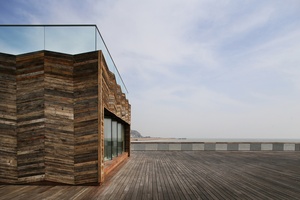
MM: Your practice is also behind many other significant residential, civic and educational buildings. Can design provide solutions to social problems and is there anything you think could make this easier?
SM: Well, it can help. I think you can do a lot to help. And, I think when it comes to urban planning, you can do a lot to help by making sure that your communities are well connected not just with transport infrastructure but by properly connecting with digital and broadband and the things that actually matter in modern society. I wish it was different and that we could say great design can save the world. I used to think we could solve all problems, but the reality is we can’t, but we can get our own house in order as the construction, design and development industry.
MM: You play a significant role as an advocate for design and architecture. Amongst many other roles you are commissioner for the Thames Estuary 2050 Growth Commission and, in 2017, you were appointed to the role of Mayor’s Design Advocate for the Greater London Authority. In 2017 you were named “New Londoner of the Year” for your work in “championing the importance of design at the highest political level”. Can you talk about this and why is this work important to you?
SM: I’ve been I’ve been doing this for 23 or 24 years now, and we now have the next generation who are designing and building, so there’s a lot of people that can do the stuff that I can do just as well. These various things have come my way, and now I have an opportunity to affect change in a bigger way. So, I feel very responsible, actually, to not waste that opportunity. It’s unprecedented that they have an architect on the National Infrastructure Commission. I don’t know whether or not it was planned that way, but I found myself with a seat at the table and I’m going to fight for what I believe in.
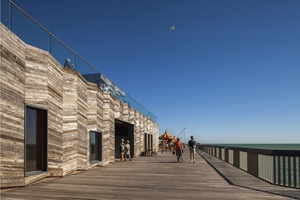
I believe that we should have infrastructure that is designed properly. What I found is that people don’t really understand what you mean by good design. And so, I try to talk about it in a way that is doesn’t feel elitist. We come at things from a different perspective; we think laterally. If you allow people who have an imagination to come to the table really early on, then we can we can see opportunities; we can see problems before they arise. So, we’re very good at helping lay the path I suppose, and the later we are brought on, the more difficult it is to affect that path in a good way.
MM: Design is increasingly becoming a big part of society and can contribute greatly to a successful society. Infrastructure can and should be beautiful. Do you think government is beginning to understand that design makes a difference in major infrastructure schemes?
SM: When I’m feeling positive, the answer is yes. More and more people are talking about it, particularly when it comes to housing infrastructure and building all the homes that we need to. You’ll find a lot of politicians talking about building great places and building great communities. There’s a sort of shifting of the language and the focus that talks about the need to actively design our built environment.
Whether or not there’s a true understanding of what that means, I’m not so sure. But, in a way, that doesn’t matter. What matters is that it is part of the narrative, and if it’s beginning to be part of the narrative then we need to capture that momentum and do something with it.
This is something I’m completely preoccupied by. I’m about to set up something called the quality of life commission because I believe that we absolutely have to find a way of encouraging, particularly the big developers, particularly the big house builders, to think about what it is that makes a difference to our quality of life.
MM: Is it important to you to contribute to the wider profession of architecture while also still running your practice? Do you now limit your dRMM work to an overview of projects rather than hands-on involvement while you are busy promoting the value of design at a high level?

SM: The two definitely feed into each other. I don’t spend as much time in practice as I used to, but I think I’m more useful now. When you have a lot more knowledge and a lot more experience you can do things a lot quicker. You know, if you want something done ask a busy person. My time management is so much better than it used to be, and I’m much more able to know where I’m useful. I just focus on what I can do well.
I had breast cancer two years ago, and I keep saying if I stay alive it is the best thing that ever happened to me because actually what it does do is to completely refocus everything you do. Suddenly I thought, why am I wasting my time doing all this other stuff when I should be spending my energies doing this. That’s really helped me focus, and that’s not to say that I don’t enjoy doing the other stuff, but it just has helped me work out what matters to me most.
MM: You were the fourth female president of the AA, an external examiner at the University of Westminster, London and the University of Kent and a professor at the University of Westminster, London. Do you think the current model of architectural education is successfully preparing young designers and architects for the reality of our job?
SM: Not well enough, but I have a very different view of education. I do think that we as a profession we need to get out more. We’re very focused on, you know, building buildings. I just can’t believe that our voice isn’t heard louder. It shouldn’t be unprecedented that I sit on the National Infrastructure Commission. We should be saying, actually Government, you need us.
We don’t seem to be putting together a coordinated vision; we don’t seem to be coordinating ourselves in any way. I think as a profession we are pitched against each other so much that we are we’re not necessarily very collegiate, and I think that’s to our detriment. We should be the ones trying to help solve some of the big issues of the day. We can certainly contribute more than we are.
MM: During your working week you live in central London. How have you furnished your flat and what art and objects fill your space?
SM: So, I have recently bought my first ever building (my flat), and it is a new development designed by practice called Allford Hall Monaghan Morris, who are great friends of mine. We designed our first ever housing scheme called One Centaur Street for a developer called Solid Space and it was around split level and solid concrete and there were various certain things that were extraordinary about it, maybe it was a new typology, which mixed cellular sleeping spaces with open plan living and kitchen spaces.
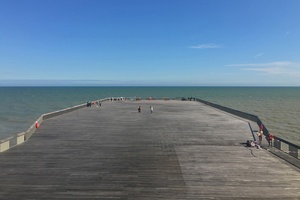
Fast forward 10 or 12 years, the same developer has been using and modifying that concept, using different architects each time he does it. This final iteration is almost identical in many ways, but with all the learning 12 years on. So I walked into it and it just felt like home because it was very similar to the building that we had done. It’s beautiful and it had been detailed so well. I mean, they are great architects, so I absolutely love it.
You’re going to laugh – I bought the last apartment and it was the show apartment and it was full of the most beautiful furniture, like Vitra. So, I’ve landed up with just an extraordinary apartment, and over the last six months I’ve put my own artwork in and obviously I have certain pieces of furniture and personal effects that I’ve swapped in. It was so nice moving in without having to think about that. It’s very weird and completely the opposite of what I would ever think about doing, but then, why not? It’s convenient and it’s great.
MM: When you are not advocating good design, I believe you can be found climbing Mount Kilimanjaro. What’s on the agenda this year? Perhaps something active here in Auckland?
SM: I have always been super active, and I do mad pursuits. The last one I did was to climb Kilimanjaro. I think a lot of that was to do with proving that I was still alive. When I got to the top of Kilimanjaro, I didn’t find it that physically challenging; I found it very mentally challenging because I had six days where I couldn’t think of anything, and for six days I had to face a lot of my demons. I got to the top of Kilimanjaro and I thought, you know what Sadie, give yourself a break. So, that was really cathartic for me.
MM: And finally, what makes good architecture in 2019?
SM: I think good architecture is buildings that respond to people’s needs and the context that they’re within. Architecture that thinks of the world’s resources and at the same time meets the needs of the people and the places that it exists within.
The 2019 in:situ conference was presented by the New Zealand Institute of Architects. Sadie Morgan was brought to New Zealand with the support of T&R Interior Systems.

